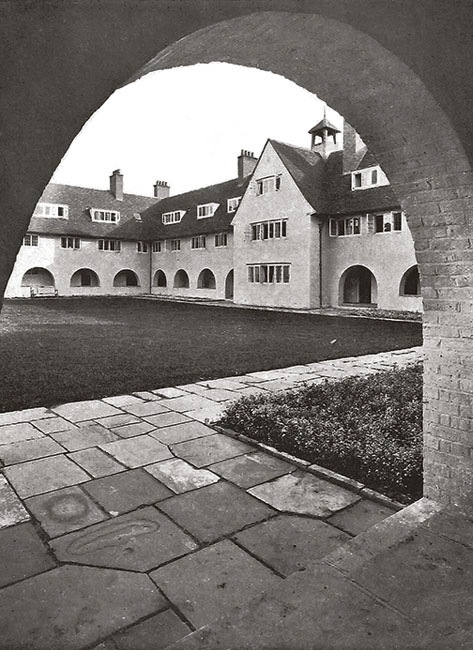Reculer pour mieux sauter
Vernieuwing door traditie
Samenvatting
De voorstelling dat de ontwikkeling van de twintigste-eeuwse moderne architectuur een rechtlijnige en onvermijdelijke stap in de evolutie van de bouwkunst is, heeft al geruime tijd plaats moeten maken voor een veel genuanceerder en gelaagder beeld. Verleden en heden staan in een complexe verhouding tot elkaar. Vernieuwing kan voortkomen uit een terugkeer naar vorige praktijken; het vasthouden aan een dwangmatig idee van het nieuwe leidt even makkelijk tot stilstand. Wanneer we terugkijken op de architectuur van de woning in de laatste 150 jaar, zien we een steeds terugkerende oriëntatie op vormen uit het verleden, echter vanuit wisselende motieven en met verschillende uitwerkingen.
In de geschiedschrijving van de negentiende- en twintigste-eeuwse architectuur wordt zonder uitzondering een sleutelrol ingenomen door de Engelse Arts and Crafts-beweging, waarin vernieuwing en verleden onlosmakelijk met elkaar verbonden waren. De Arts and Crafts wilde zich losmaken uit het keurslijf van het historisme van de Victoriaanse architectuur en tegenwicht bieden aan de industriële massaproductie. De beweging zocht naar vrijheid en functionaliteit, door tegenover een formele compositie een vrije, additieve werkwijze te plaatsen, tegenover mechanische reproductie het unieke ambachtelijke.
Belangrijke inspiratiebron werd de anonieme, ambachtelijke en als tijdloos geïnterpreteerde bouwkunst van 300 jaar terug, vóór het begin van het industriële tijdperk. Uit deze bron ontwikkelde Richard Norman Shaw (1831-1912) in een reeks landhuisontwerpen een nieuwe free style waarin allerhande invloeden samen kwamen. Latere protagonisten van de Arts and Crafts interpreteerden de historische voorbeelden op verschillende wijze. Het werk van Mackay Hugh Baillie Scott (1864-1945) laat een vrij precieze navolging zien in formele zin. De navolging beperkte zich echter tot materiaal en vorm; binnen de vertrouwde beelden ontwikkelde kwam hij een opvallende inventiviteit in het vinden van nieuwe typologieën voor seriematige woningbouw. Waterlow Court in Hampstead Garden Suburb in noord-Londen is hier een voorbeeld van. Het gebouw, dat een van de allereerste, betaalbare en met gemeenschappelijke voorzieningen uitgeruste appartementengebouwen voor alleenstaanden was, deed zich uiterlijk voor als een zestiende-eeuws university college. De architect beschouwde zijn ontwerp als een begin voor een geheel nieuwe manier van wonen in een suburbane omgeving, waar collectieve woongebouwen, ook voor gezinnen, een alternatief bieden voor de in zijn ogen troosteloze suburbs met eindeloze rijwoningen.
In het werk van zijn tijdgenoot Edwin Lutyens (1869-1944) zien we een andere bewerking van de door de eerste generatie Arts and Craftsarchitecten aangedragen bronnen: bepaalde karakteristieken vergroot hij uit. Onverwachte combinaties van vormen, contrasten tussen excessief uitvergrote elementen als schoorstenen tegenover geminimaliseerde gevelopeningen worden uitgewerkt in zeer persoonlijke ontwerpen, die soms bijna karikaturale trekken krijgen. De gesloten en gekromde gevelvlakken van Tigbourne Court, bekroond door kolossale schoorstenen, geven de entree van het huis, een van de vele landhuisontwerpen van Lutyens, een ongekend dramatische aanblik.



